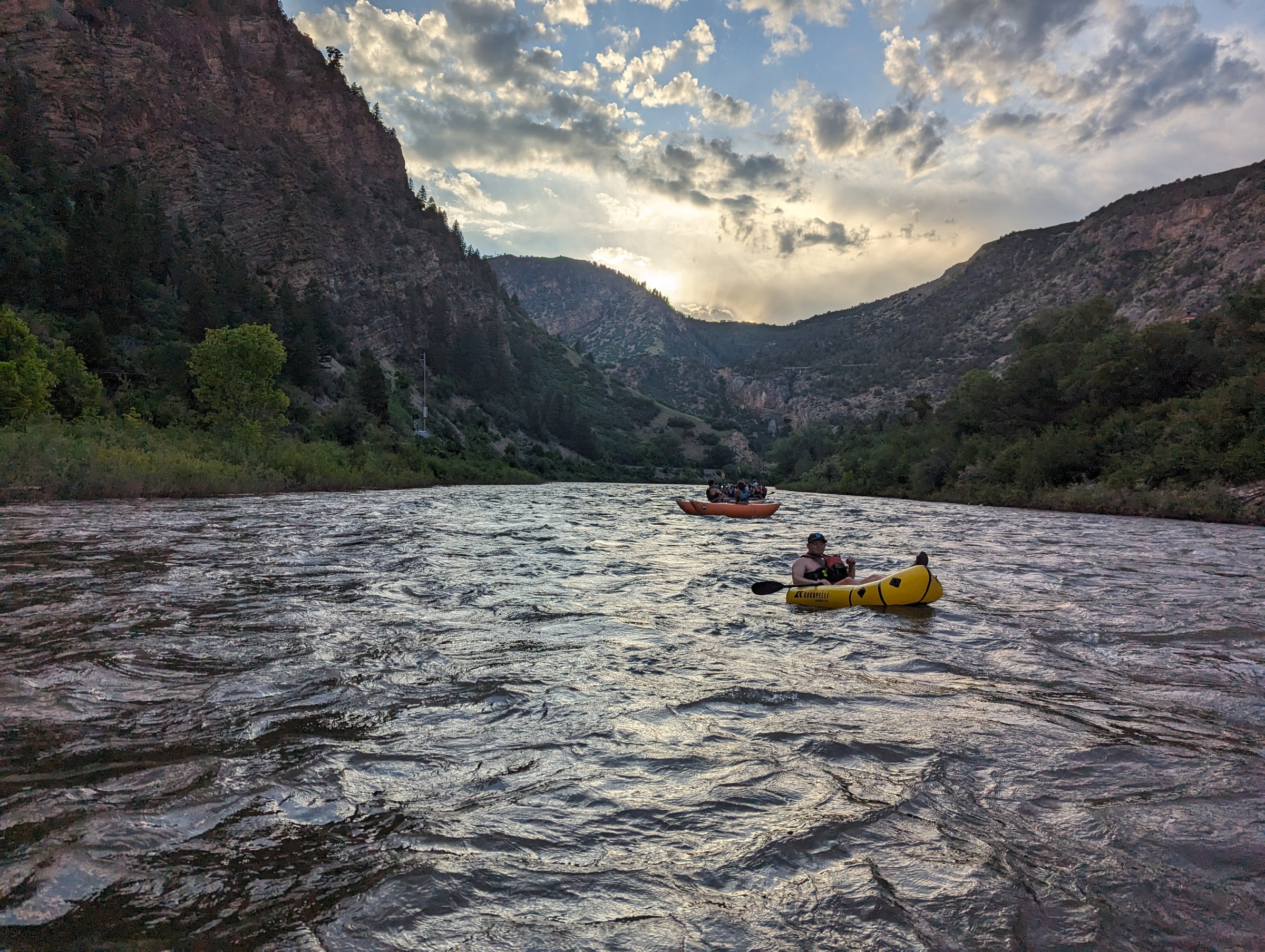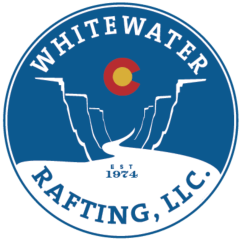Spotting Wildlife Along Colorado’s Rivers

Whitewater rafting in Colorado is not just an adventure for adrenaline seekers; it’s also a remarkable opportunity for nature enthusiasts to witness an incredible array of wildlife. From the towering bighorn sheep perched on rocky cliffs to the elegant great blue heron fishing along the riverbanks, the wildlife you can encounter on these trips transforms a thrilling rafting journey into an unforgettable wildlife safari.
Rivers near Glenwood Springs like the Colorado River, Roaring Fork River and Eagle River are dynamic ecosystems teeming with life and natural beauty. These rivers support unique ecosystems that attract a wide variety of wildlife. The combination of water, vegetation, and rocky terrain provides food, shelter, and breeding grounds for numerous species.
So, what can you expect to see while rafting Colorado’s rivers? A lot of it depends on where you go and when you raft. And while nothing is 100% guaranteed, you can expect to encounter at least a few of these fellows along your journey.
On Land
Exploring Colorado’s rivers by raft gives you a front-row seat to some of the region’s most fascinating mammals. These creatures add an extra element of wonder to your rafting adventure, making each trip memorable. Here are some of the mammals you might encounter along the rivers within a 100-mile radius of Glenwood Springs.
Bighorn Sheep
Bighorn sheep are one of Colorado’s most iconic species. Recognizable by their impressive curled horns, these agile climbers navigate rocky terrain with ease. They are often found on steep cliffs and rugged outcrops near rivers, where they can escape predators and find food. Bighorn sheep are frequently spotted along the Colorado River, especially in the Glenwood Canyon area. The cliffs and crags provide perfect vantage points for these animals, making it a prime location to see them.
Beavers
Beavers are nature’s engineers, known for their ability to build complex lodges and dams. These industrious rodents play a crucial role in creating and maintaining wetland habitats, which benefit a wide range of other species. Look for beaver lodges and freshly gnawed tree stumps along the riverbanks. Beavers are most active during dawn and dusk, so these times offer the best chances for sightings. Quiet stretches of the Roaring Fork River are excellent places to observe beaver activity.
Elk and Deer
Elk and deer are common sights near Colorado’s rivers. Elk are larger and more robust, with males sporting impressive antlers, while deer are smaller and more delicate. Both species are often seen grazing in meadows and forests near water sources. Elk and deer are especially prevalent near the Eagle River and the upper reaches of the Roaring Fork River. Early morning and late evening are the best times to see these animals as they come down to the water to drink and graze.
Black Bears
Black bears are solitary and shy creatures that are occasionally spotted near rivers, especially during the summer and fall when they forage for food. These bears are generally not aggressive but should be observed from a safe distance. If you’re lucky enough to see a black bear, make sure to keep a respectful distance. Never approach or feed bears, and store food securely while camping or picnicking along the rivers. Sightings are more common near the forested areas of the Colorado River, particularly in the early morning or late evening.
In The Sky
The rivers around Glenwood Springs provide a haven for many bird species, from majestic raptors to graceful waterfowl. Here are some of the avian wonders you might encounter on your rafting adventure.
Bald Eagles
Bald eagles are a symbol of strength and freedom, and spotting one is always a thrilling experience. These large birds of prey have a distinctive white head and tail, with a powerful, yellow beak. They are skilled hunters, often seen swooping down to snatch fish from the water. Bald eagles are commonly seen along the Colorado River, especially in areas with abundant fish. Look for their large nests high in the treetops or perched on rocky outcrops near the water. Winter and early spring are particularly good times for eagle watching, as they are more active and visible during these seasons.
Ospreys
Ospreys, often known as fish hawks, are expert anglers. With their striking white underparts and dark brown upperparts, they are easy to identify. Ospreys have a unique hunting style, diving feet-first into the water to catch fish with their sharp talons. They are frequently spotted along the Roaring Fork River, where their nests can often be seen atop trees, poles, and platforms. These birds are most active during the day, providing plenty of opportunities for observation. Watching an osprey dive for fish is a highlight for any wildlife enthusiast.
Great Blue Herons
The great blue heron is the largest heron in North America, standing up to four feet tall with a wingspan that can reach six feet. These stately birds are often seen wading in shallow waters, patiently hunting for fish, amphibians, and small mammals.Great blue herons are a common sight along all the major rivers in the area, particularly the Eagle River. They prefer calm, shallow waters where they can easily spot prey. Early morning and late afternoon are the best times to see these elegant birds in action.
Songbirds and Waterfowl
The rivers near Glenwood Springs are home to a wide variety of songbirds and waterfowl. Common species include the American dipper, which bobs along the riverbanks, and colorful ducks like mallards and mergansers. These birds add vibrant sights and sounds to your rafting experience. Bring a pair of binoculars and a field guide to help identify the different species you encounter. Spring and summer are the best seasons for birdwatching, as many species are breeding and more active during these times.
In the Water
While the thrill of whitewater rafting and the sight of majestic mammals and birds can make any trip unforgettable, the rivers around Glenwood Springs also teem with fascinating aquatic life. The clear waters of Colorado’s rivers are home to a variety of fish and playful mammals that add to the richness of your rafting experience. Here are some of the aquatic creatures you might encounter.
Trout and Other Fish
Colorado’s rivers are renowned for their trout populations, making them a haven for anglers and wildlife enthusiasts alike. Common species include rainbow trout, brown trout, and the native cutthroat trout. These fish are known for their vibrant colors and the challenge they provide to fishermen. While whitewater rafting, you can often see trout darting through the clear waters. Some rafting trips combine fishing excursions, allowing you to try your hand at catching these beautiful fish. The Roaring Fork River, with its crystal-clear waters, is especially popular for both rafting and fishing.
River Otters
River otters are one of the most delightful animals to spot along Colorado’s rivers. These sleek, playful mammals are excellent swimmers, often seen gliding gracefully through the water or frolicking along the riverbanks. Their social behavior and curious nature make them a joy to watch. River otters are more likely to be seen in quieter, less disturbed sections of the rivers, particularly in the early morning or late evening. Look for them along the Roaring Fork and Eagle Rivers, where they hunt for fish, crayfish, and other aquatic creatures. Their distinctive tracks and slides can also be spotted along muddy or snowy riverbanks.
Aquatic Insects
The health of Colorado’s rivers is supported by a vibrant community of aquatic insects, including mayflies, caddisflies, and stoneflies. These insects are crucial for the ecosystem, serving as a primary food source for many fish and birds. While rafting, take a moment to observe the water’s surface and the vegetation along the banks. You might see adult insects emerging or larvae clinging to rocks and plants. These small creatures play a big role in maintaining the river’s health and supporting its diverse wildlife.
On the Rocks
While rafting along Colorado’s rivers, you might encounter a variety of reptiles and amphibians that contribute to the region’s rich biodiversity. These often-overlooked creatures play essential roles in the ecosystem and offer unique viewing opportunities for nature enthusiasts.
Snakes and Lizards
Colorado’s riverbanks and surrounding areas are home to several species of non-venomous snakes and colorful lizards. Some of the most commonly seen species include the garter snake, known for its distinctive stripes, and the western terrestrial garter snake, which can often be spotted near water. While the snakes you are likely to encounter are harmless, it’s always important to observe them from a distance. If you see a snake, enjoy the sighting but give it plenty of space to avoid disturbing it. Remember, these reptiles play a crucial role in controlling rodent populations and maintaining ecological balance.
Frogs and Toads
The croaks and calls of frogs and toads add a symphony of sounds to the river environment, especially during the evening. Species like the chorus frog and the wood frog are common along the riverbanks. These amphibians are more often heard than seen, but their calls are a delightful reminder of the diverse life supported by the river. Frogs and toads are most active during the warmer months, particularly in spring and early summer when they breed. Evening and night-time are the best periods to hear their calls. Look for them near still or slow-moving water along the edges of the river.
